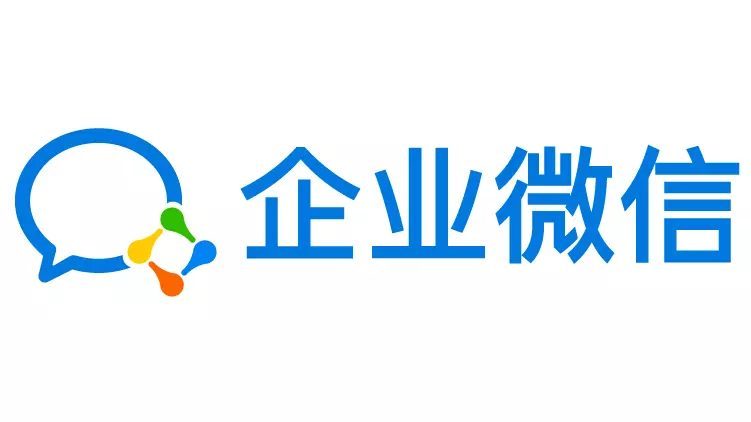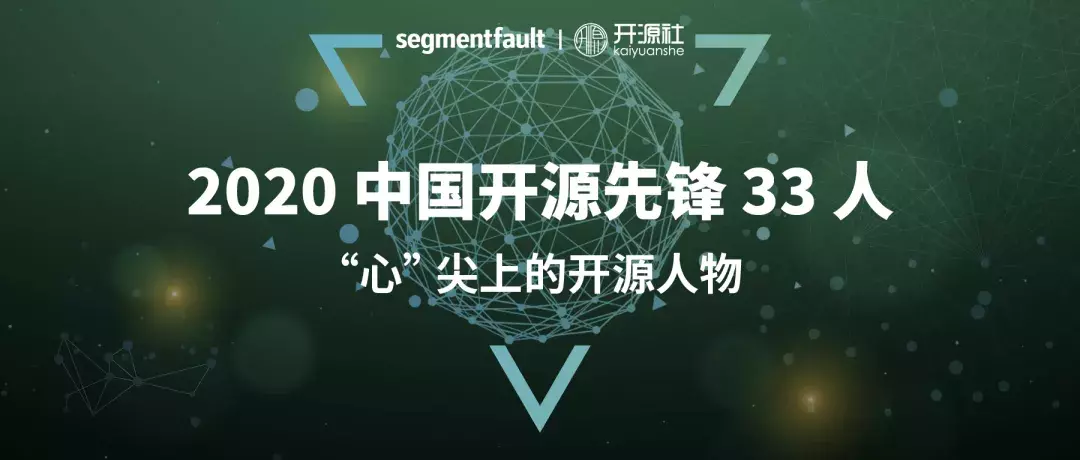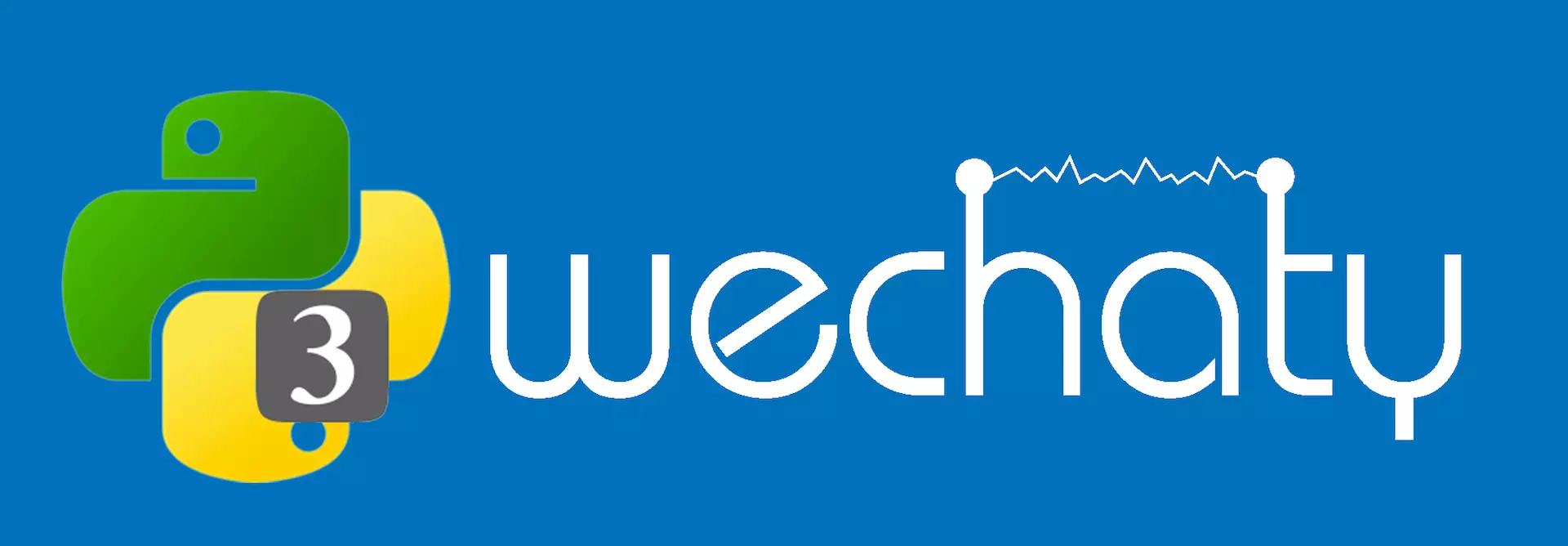GitHub 上搜了一圈,看到了挺多微信 bot 的方案,后面决定使用 wechaty,因为感觉设计得很优雅,6 行代码就可以轻松构建一个 wxbot。
文档近期正在频繁更新中
为什么需要该功能
作为一名前端开发工程师,平时也喜欢写技术博客和交朋友,为此我也创建了微信技术交流群和微信公众号,一般我都会在文章下面贴出公众号和我的个人二维码,给有兴趣的小伙伴们添加微信然后我再拉他们进群这些,但是不停的同意微信好友验证,再发送群邀请真的是太痛苦了,相信很多做公众号的小伙伴都和我一样,作为一名开发,这种重复劳动是绝对不能忍受的基于这种情况和公司业务情况,调研发现了并了解到了wechaty,发现其提供的功能能够覆盖到企业和个人微信,并且能够自己定制化开发符合自己需求的功能。
Wechaty 是什么
微信个人号功能非常强大和灵活,是一个非常适合用来做 ChatBot 的载体。它可以灵活不受限制的发送语音短信、视频、图片和文字,支持多人群聊。但是使用微信个人微信号作为 ChatBot,需要通过非官方的第三方库接入微信。因为截至 2018 年底,微信尚无任何官方的 ChatBot API 发布。
Wechaty 是一个开源的的对话机器人 SDK,支持 个人号 微信。它是一个使用 Typescript 构建的 Node.js 应用。支持多种微信接入方案,包括网页,ipad,ios,windows, android 等。同时支持 Linux, Windows, Darwin(OSX/Mac) 和 Docker 多个平台。
在 GitHub 上可以找到很多支持微信个人号接入的第三方类库,其中大多都是基于 Web Wechat 的 API 来实现的,如基于 Python 的 WeixinBot,基于 Node.js 的 Wechaty 等。少数支持非 Web 协议的库,大多是商业私有闭源的,Wechaty 是少有的开源项目支持非 Web 协议的类库。
只需要 6 行代码,你就可以 通过个人号 搭建一个 微信机器人功能 ,用来自动管理微信消息。
更多功能包括
- 消息处理:关键词回复
- 群管理:自动入群,拉人,踢人
- 自动处理好友请求
- 智能对话:通过简单配置,即可加入智能对话系统,完成指定任务
- … 请自行开脑洞 所有你能想到的交互模式。在微信上都有实现的可能。
每日定时拉取天气预报。
每天给你心爱的人发送早安和晚安信息。
什么成语接龙啦。快问快答等等功能
当然 wechaty 的功能服务并不是免费的
200/月的费用,如果你是个人开发可能会斟酌一二。但是你可以通过社区申请一个长达 15 天的免费 token 来尝试使用和开发一个小型机器人,从而决定你是否需要购买使用。 关于申请的地址我放在了这里Wechaty Token 申请及使用文档和常见问题
基于 wechaty-puppet-service 开发企业级微信机器人
目录结构
├── config
│ └── index.js // 配置文件
├── package.json
├── service
│ ├── bot-service
│ │ ├── error-service.js
│ │ ├── friendship-service.js
│ │ ├── heartbeat-service.js
│ │ ├── login-service
│ │ │ ├── function-service.js
│ │ │ └── index.js
│ │ ├── logout-service.js
│ │ ├── message-service
│ │ │ ├── function-service.js
│ │ │ └── index.js
│ │ ├── ready-service
│ │ │ ├── function-service.js
│ │ │ └── index.js
│ │ ├── room-invite-service.js
│ │ ├── room-join-service.js
│ │ ├── room-leave-service.js
│ │ ├── room-topic-service.js
│ │ └── scan-service
│ │ └── index.js
│ ├── common-service
│ │ ├── chatbot-service.js
│ │ ├── ding-service.js
│ │ └── oss-service.js
│ └── redis-service
│ └── index.js
├── src
│ └── main.js // 入口
├── store
│ └── index.js // 全局存储对象
├── utils
│ ├── oss.js // 阿里云oss认证
│ └── redis.js // redis认证登录
└── yarn.lock
src/main.js
import { Wechaty } from 'wechaty'; // 机器人木偶
import { onScan } from '../service/bot-service/scan-service'; // 当机器人需要扫码登陆的时候会触发这个事件。
import { onLogin } from '../service/bot-service/login-service'; // 当机器人成功登陆后,会触发事件,并会在事件中传递当前登陆机器人的信息
import { onLogout } from '../service/bot-service/logout-service'; // 当机器人检测到登出的时候,会触发事件,并会在事件中传递机器人的信息。
import { onReady } from '../service/bot-service/ready-service'; // 当所有数据加载完成后,会触发这个事件。在wechaty-puppet-padchat 中,它意味着已经加载完成Contact 和Room 的信息。
import { onMessage } from '../service/bot-service/message-service'; // 当机器人收到消息的时候会触发这个事件。
import { onRoomInvite } from '../service/bot-service/room-invite-service'; // 当收到群邀请的时候,会触发这个事件。
import { onRoomTopic } from '../service/bot-service/room-topic-service'; // 当有人修改群名称的时候会触发这个事件。
import { onRoomJoin } from '../service/bot-service/room-join-service'; // 当有人进入微信群的时候会触发这个事件。机器人主动进入某个微信群,那个样会触发这个事件。
import { onRoomleave } from '../service/bot-service/room-leave-service'; // 当机器人把群里某个用户移出群聊的时候会触发这个时间。用户主动退群是无法检测到的。
import { onFriendship } from '../service/bot-service/friendship-service'; // 当有人给机器人发好友请求的时候会触发这个事件。
import { onHeartbeat } from '../service/bot-service/heartbeat-service'; // 获取机器人的心跳。
import { onError } from '../service/bot-service/error-service'; // 当机器人内部出错的时候会触发error 事件。
import { wechatyToken } from '../config/index'; // 机器人token
import { globalData } from '../store/index'; // 全局对象
globalData.bot = new Wechaty({
puppet: "wechaty-puppet-service",
puppetOptions: {
token: wechatyToken,
},
});
globalData.bot
.on("scan", onScan)
.on("login", onLogin)
.on("logout", onLogout)
.on("ready", onReady)
.on("message", onMessage)
.on("room-invite", onRoomInvite)
.on("room-topic", onRoomTopic)
.on("room-join", onRoomJoin)
.on("room-leave", onRoomleave)
.on("friendship", onFriendship)
.on("heartbeat", onHeartbeat)
.on("error", onError)
.start();
具体功能实现及代码
- 扫码登录 通过 node 启动后,触发 onScan 事件,将登录二维码打印在控制台,扫码登录
import QrcodeTerminal from 'qrcode-terminal';
import { ScanStatus } from 'wechaty-puppet';
/**
* @method onScan 当机器人需要扫码登陆的时候会触发这个事件。 建议你安装 qrcode-terminal(运行 npm install qrcode-terminal) 这个包,这样你可以在命令行中直接看到二维码。
* @param {*} qrcode
* @param {*} status
*/
const onScan = async (qrcode, status) => {
try {
if (status === ScanStatus.Waiting) {
console.log(
`========================👉二维码状态:${status}👈========================\n\n`
);
QrcodeTerminal.generate(qrcode, {
small: true,
});
}
} catch (error) {
console.log("onScan", error);
}
};
module.exports = { onScan };
- 登录成功 扫码登录成功后会触发 onLogin 事件,通过事件接收到登录信息和机器人信息,通过钉钉接口将登录通知发送至钉钉群内
const {
notificationLoginInformation,
} = require("../../common-service/ding-service");
import { updateBotInfo } from './function-service';
import { globalData } from '../../../store/index';
/**
* @method onLogin 当机器人成功登陆后,会触发事件,并会在事件中传递当前登陆机器人的信息
* @param {*} botInfo
*/
const onLogin = async (botInfo) => {
try {
console.log(
"========================👉 onLogin 👈========================\n\n"
);
console.log(`机器人信息:${JSON.stringify(botInfo)}\n\n`);
// 全局存储机器人信息
globalData.botPayload = botInfo.payload;
// 更新机器人列表
updateBotInfo();
// 机器人登录登出提醒/通知钉钉接口
notificationLoginInformation(true);
} catch (error) {
console.log(`onLogin: ${error}`);
}
};
module.exports = { onLogin };
— 机器人异常退出 当 node 服务异常终端,或者手机上退出机器人登录后会触发 onLogout 事件,同样钉钉群内通知信息,并且销毁程序中运行的一些定时器等
const {
notificationLoginInformation,
} = require("../common-service//ding-service");
import { globalData } from '../../store/index';
/**
* @method onLogout 当机器人检测到登出的时候,会触发事件,并会在事件中传递机器人的信息。
* @param {*} botInfo
*/
const onLogout = async (botInfo) => {
try {
console.log(
"========================👉 onLogout 👈========================"
);
console.log(`当bot检测到注销时,将与当前登录用户的联系人发出注销。`);
// 全局存储机器人信息
globalData.botPayload = botInfo.payload;
const { updateRoomInfoTimer, chatbotSayQueueTimer } = globalData;
// 机器人退出清空定时器
if (updateRoomInfoTimer) {
clearTimeout(updateRoomInfoTimer);
}
if (chatbotSayQueueTimer) {
clearInterval(chatbotSayQueueTimer);
}
// 机器人登录登出提醒/通知钉钉接口
notificationLoginInformation(false);
} catch (error) {
console.log(`error in onLogout:${error}`);
}
};
module.exports = { onLogout };
- 消息接收处理 当微信接收到新的消息时候会触发 onMessage 事件,通过事件内对消息的判断,群内消息还是私聊消息等做出不同的逻辑处理。从而实现业务需求。部分代码如下
import dayjs from 'dayjs';
import { say } from '../../common-service/chatbot-service';
const {
isCanSay,
roomIdentifyVin,
rooImageIdentifyVin,
contactIdentifyVin,
contactImageIdentifyVin,
messageProcessing,
storageRoomMessage,
storageContactMessage,
} = require("./function-service");
const {
roomMessageFeedback,
contactMessageFeedback,
} = require("../../common-service/ding-service");
import { globalData } from '../../../store/index';
import { Message } from 'wechaty';
/**
* @method onMessage 当机器人收到消息的时候会触发这个事件。
* @param {*} message
*/
const onMessage = async (message) => {
try {
console.log(
"========================👉 onMessage 👈========================\n\n"
);
// 机器人信息
const { botPayload } = globalData;
// 获取发送消息的联系人
const contact = message.from();
// 获取消息所在的微信群,如果这条消息不在微信群中,会返回null
const room = message.room();
// 查看这条消息是否为机器人发送的
const isSelf = message.self();
// 处理消息内容
const text = await messageProcessing(message);
// console.log(`========================👉 处理消息后内容为:${text} 👈========================\n\n`)
// 消息为空不处理
if (!text) return;
// 消息详情
const messagePayload = message.payload;
// console.log(`========================👉 消息详情:${JSON.stringify(messagePayload)} 👈========================\n\n`)
// 消息联系人详情
const contactPayload = contact.payload;
// console.log(`========================👉 消息联系人详情:${JSON.stringify(contactPayload)} 👈========================\n\n`)
// 群消息
if (room) {
console.log(
`========================👉 群聊消息 👈========================\n\n`
);
// 做相应的逻辑处理
// 私聊消息
} else {
console.log(
`========================👉 私聊消息 👈========================\n\n`
);
console.log(
`消息时间:${dayjs(messagePayload.timestamp).format(
"YYYY-MM-DD HH:mm:ss"
)}\n\n微信名称:${contactPayload.name}\n\n微信类型:${
contactPayload.type
}\n\n备注昵称:${
contactPayload.alias
}\n\n消息内容:${text}\n\n消息类型:${messagePayload.type}\n\n`
);
}
} catch (error) {
console.log(`onMessage:${error}`);
}
};
module.exports = { onMessage };
至于其他的一些生命周期以及钩子函数。大家可以参考文档做出属于自己的应用机器人
封装 say 方法
因为 say()方法会在多处调用,并且要根据不同的消息类型发送的内容做出不同的数据处理。大家以后也会遇到,因此这里将我封装的一个 say 方法展示给大家用于参考
import { MiniProgram, UrlLink, FileBox } from 'wechaty';
import dayjs from 'dayjs';
import { DelayQueueExector } from 'rx-queue';
const {
redisHexists,
redisHset,
redisHget,
redisSet,
redisLpush,
} = require("../redis-service/index");
import { globalData } from '../../store/index';
const delay = new DelayQueueExector(10000);
/**
* @method say 机器人发送消息
* @param {*} messageType 消息类型 7文本,1文件,6图片,3个人名片,14卡片链接 9小程序
* @param {*} sender 来源 房间 || 个人 实例对象
* @param {*} messageInfo 内容
*/
/**
* messageInfo 数据结构
* tetx: string 文本消息必传
* fileUrl: string 文件消息必传
* imageUr: string 图片消息必传
* cardId: string 个人名片消息必传
* linkInfo: object 卡片消息必传
* description: string 描述
* thumbnailUrl: string 缩略图地址
* title: string 标题
* url: string 跳转地址
*/
async function say({ messageType, sender, messageInfo }) {
// console.log(messageType);
// console.log(sender);
// console.log(messageInfo);
try {
return new Promise(async (resolve, reject) => {
// 机器人信息
const { bot } = globalData;
// 枚举消息类型
const MessageType = {
text: 7, // 文本
fromFile: 1, // 文件
fromUrl: 6, // 图片
contactCard: 3, // 个人名片
urlLink: 14, // 卡片链接
miniProgram: 9, // 小程序
};
// 内容不存在
if (!messageInfo) {
return;
}
// 要发送的消息内容
let content;
switch (messageType) {
// 文本 7
case MessageType.text:
content = messageInfo.text;
break;
// 文件 1
case MessageType.fromFile:
content = FileBox.fromFile(messageInfo.fromFile);
break;
// 图片 6
case MessageType.fromUrl:
content = FileBox.fromUrl(messageInfo.fromUrl);
break;
// 个人名片 3
case MessageType.contactCard:
content = await bot.Contact.load("1688853777824721");
break;
// 链接 14
case MessageType.urlLink:
content = new UrlLink({
description:
"WeChat Bot SDK for Individual Account, Powered by TypeScript, Docker, and Love",
thumbnailUrl:
"https://avatars0.githubusercontent.com/u/25162437?s=200&v=4",
title: "Welcome to Wechaty",
url: "https://github.com/wechaty/wechaty",
});
break;
// 小程序 9
case MessageType.miniProgram:
content = new MiniProgram({
appid: "wx60090841b63b6250",
title: "我正在使用Authing认证身份,你也来试试吧",
pagePath: "pages/home/home.html",
description: "身份管家",
thumbUrl:
"30590201000452305002010002041092541302033d0af802040b30feb602045df0c2c5042b777875706c6f61645f31373533353339353230344063686174726f6f6d3131355f313537363035393538390204010400030201000400",
thumbKey: "42f8609e62817ae45cf7d8fefb532e83",
});
break;
default:
break;
}
delay.execute(async () => {
sender
.say(content)
.then((value) => {
console.log(
`========================👉 机器人回复 👈========================\n\n`
);
resolve();
})
.catch((reason) => {
console.log(
`========================😢 机器人发送消息失败 😢========================\n\n`,
reason
);
});
});
});
} catch (error) {
console.log("error in say", error);
}
}
module.exports = {
say,
};
对了,对于 onMessage 事件中消息格式的判断我也做了一层封装,这里给大家提供参考。
/**
* @method messageProcessing 处理消息内容
* @param {*} message
*/
async function messageProcessing(message) {
try {
return new Promise(async (resolve, reject) => {
console.log(
`========================👉 messageProcessing 👈========================\n\n`
);
// 消息详情
const messagePayload = message.payload;
// 获取消息的文本内容。
let text = message.text();
/** Unknown: 0,
Attachment: 1,
Audio: 2,
Contact: 3,
ChatHistory: 4,
Emoticon: 5,
Image: 6,
Text: 7,
Location: 8,
MiniProgram: 9,
GroupNote: 10,
Transfer: 11,
RedEnvelope: 12,
Recalled: 13,
Url: 14,
Video: 15
*/
// 消息类型
switch (messagePayload.type) {
// 附件 0
case Message.Type.Unknown:
console.log(
`========================👉 消息类型为未知消息:${messagePayload.type} 👈========================\n\n`
);
text = "[你收到一个未知消息,请在手机上查看]";
break;
// 附件 1
case Message.Type.Attachment:
console.log(
`========================👉 消息类型为附件:${messagePayload.type} 👈========================\n\n`
);
// 暂时不知道怎么处理
text = "[你收到一个附件,请在手机上查看]";
break;
// 音频 2
case Message.Type.Audio:
console.log(
`========================👉 消息类型为音频:${messagePayload.type} 👈========================\n\n`
);
text = "[你收到一条语音消息,请在手机上查看]";
break;
// 个人名片 3
case Message.Type.Contact:
console.log(
`========================👉 消息类型为个人名片:${messagePayload.type} 👈========================\n\n`
);
text = "[你收到一张个人名片,请在手机上查看]";
break;
// 聊天记录 4
case Message.Type.ChatHistory:
console.log(
`========================👉 消息类型为聊天记录:${messagePayload.type} 👈========================\n\n`
);
text = "[你收到聊天记录,请在手机上查看]";
break;
// 表情符号 5
case Message.Type.Emoticon:
console.log(
`========================👉 消息类型为表情符号:${messagePayload.type} 👈========================\n\n`
);
text = "[你收到表情符号,请在手机上查看]";
// 暂时不知道怎么处理
break;
// 图片 6
case Message.Type.Image:
console.log(
`========================👉 消息类型为图片:${messagePayload.type} 👈========================\n\n`
);
// 上传图片至阿里云获取图片地址
text = await addImageOss(message);
break;
// 文本 7
case Message.Type.Text:
console.log(
`========================👉 消息类型为文本:${messagePayload.type} 👈========================\n\n`
);
// 去空格换行
text = text.replace(/\s+/g, "");
break;
// 位置 8
case Message.Type.Location:
console.log(
`========================👉 消息类型为位置:${messagePayload.type} 👈========================\n\n`
);
text = "[你收到一条图片消息,请在手机上查看]";
break;
// 小程序 9
case Message.Type.MiniProgram:
console.log(
`========================👉 消息类型为小程序:${messagePayload.type} 👈========================\n\n`
);
text = "[你收到一个小程序消息,请在手机上查看]";
break;
// GroupNote 10
case Message.Type.GroupNote:
console.log(
`========================👉 消息类型为GroupNote:${messagePayload.type} 👈========================\n\n`
);
text = "[你收到一个GroupNote,请在手机上查看]";
break;
// Transfer 11
case Message.Type.Transfer:
console.log(
`========================👉 消息类型为Transfer:${messagePayload.type} 👈========================\n\n`
);
text = "[你收到一个Transfer,请在手机上查看]";
break;
// 红包 12
case Message.Type.RedEnvelope:
console.log(
`========================👉 消息类型为红包:${messagePayload.type} 👈========================\n\n`
);
text = "[你收到一个红包,请在手机上查看]";
break;
// Recalled 13
case Message.Type.Recalled:
console.log(
`========================👉 消息类型为Recalled:${messagePayload.type} 👈========================\n\n`
);
text = "[你收到一个Recalled,请在手机上查看]";
break;
// 链接地址 14
case Message.Type.Url:
console.log(
`========================👉 消息类型为链接地址:${messagePayload.type} 👈========================\n\n`
);
// 暂时不知道怎么处理
text = "[你收到一条链接消息,请在手机上查看]";
break;
// 视频 15
case Message.Type.Video:
console.log(
`========================👉 消息类型为视频:${messagePayload.type} 👈========================\n\n`
);
text = "[你收到一个视频消息,请在手机上查看]";
break;
default:
text = "";
break;
}
resolve(text);
});
} catch (error) {
console.log("error in messageProcessing", error);
}
}
为什么这样做一层封装处理,是因为我们的业务需求要将聊天内容进行 redis 和 mysql 数据存储。方便以后数据订正和查询使用。
实现的功能
基于 wechaty 我们实现的功能有那些呢?
— 根据关键词反馈消息
- 识别图片
- 关键词指令绑定群信息。根据不同指令进行群配置。
- redis 存储机器人信息。将群信息存储并同步在 redis 和 mysql 中。后台配置对应群是否开启某些功能等等。
- 定时发送消息
- 群邀请自动通过,入群以后做出相应数据存储逻辑判断功能设置等
- 好友申请自动通过,关键字申请自动邀请入不同的群,功能覆盖等等
- 等等功能。
最后
你如果想用我这些东西,拉下代码 config.js 里换下 token 和一些配置信息就可以,当然我在不停更新,功能会越来越多,所以仓库中代码和文中会有些不一样,使用时简单看下代码,都写了详细注释,也很简单,但是因为代码中很多地方涉及到来企业敏感信息。我只好重新写来一份最小可执行的demo,大家仅供参考。
❤️ 看完帮个忙
如果你觉得这篇内容对你挺有启发,我想邀请你帮我个小忙:
点赞,让更多的人也能看到这篇内容(收藏不点赞,都是耍流氓 -_-)
关注公众号「番茄学前端」,我会定时更新和发布前端相关信息和项目案例经验供你参考。
这里提供给大家一个最小demo
感谢
作者: zhihuifanqiechaodan 前端开发工程师



 开源项目 Wechaty 作者李卓桓入选「中国开源先锋 33 人」
开源项目 Wechaty 作者李卓桓入选「中国开源先锋 33 人」